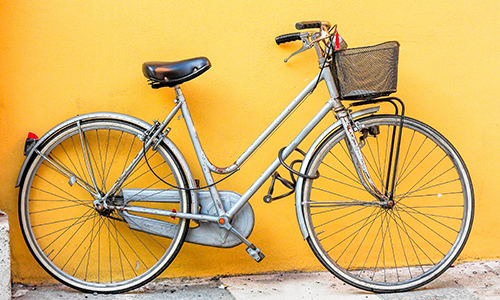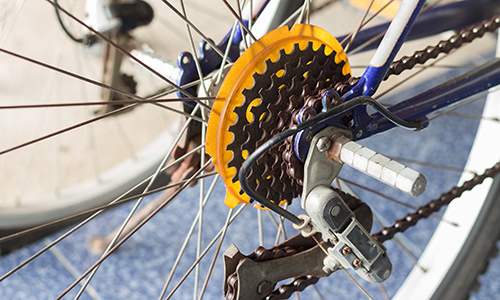Top tips for getting back on your bike
- Overview
- Full article
- Related articles
Most people start cycling in childhood, but later as their lives become busier they get off track and their confidence can falter. The good news is you rarely lose the ability to ride a bike.

Whether you choose to pootle along with friends, use your bike as a means to commute or to take on more serious cycling challenges, a few simple preparations can make for a much easier return.
1. Don’t be afraid to ask for advice
Your local cycle shop is a fantastic recource for advice, and importantly will help you to set up your bike correctly to make for a much comfier ride. We're all different shapes and sizes so fitting your bike to your body will make your cycle easier. Most shops will do this free of charge.
2. Choose your bike wisely
If you need to purchase a bike, there are several different types you might choose. Your bike should be based on the terrain you expect to mostly be riding on. Slick and narrow tyres are better suited to roads, but mountain bikes are much better suited if the majority of riding will be done off road. Manufacturers recognise that people often want to have the ability to do both and offer 'hybrid' bikes. These bikes tend to have flat bars, high gearing and some tread on the tyres, but narrower tyres and smaller frame geometry allowing you to use them both on and off road. Single speed bikes, which don't have gears, are simple and therefore cheaper and popular in cities.
3. Like a Scout, always be prepared
There's a few other purchases you should consider to prepare yourself for cycling. Safety comes first, so don't forget to buy a helmet, and consider changing it if you have an old one - most manufacturers recommend changing every two to three years due to material breakdown.
Being able to repair common mechanical issues like punctures is something else to consider. Carry a puncture repair kit or a spare tube and a pump or gas canisters to inflate the tubes. It’s fairly simple to do yourself and your local bike shop will show you if you don't know how.
For comfort, you may want to get some cycling gloves, comfortable shorts (doesn’t have to be lycra) and a high visibility rain jacket, which can be packed up when not needed.
4. Practice makes perfect
Practice riding, braking and turning in a safe area away from traffic. If you fall at this point it will be much less dangerous. If you do fall, don’t be put off. The more you practice the more confident you will feel handling the bike.

5. Get to know your gears
Changing gear is one area people worry about and can make a huge difference to your comfort during a long ride. Going up or downhill is much easier if you’re in the right gear.
Just like driving a car use your gears to make your ride more manageable on incline and steep climbs, changing down to a low gear as the terrain becomes steep, then change into a high gear when you descend; so you control your descent without your feet spinning too fast. Become familiar with your gears before taking to the roads.
6. Stay alert
When you’re on the roads you have to remain in control, so think and look ahead, and beware any potential obstacles in your way. This can include hidden dips and obstacles around corners. If you cannot see around a corner, take it slowly to prevent an accident.
7. Know your rights
One of the most contentious issues is where you should be on the road. Rest assured you are entitled to be on the road - it says so in the Highway Code - and you can also ride two abreast on quiet roads.
If you are approaching a narrow road, one with roadworks or crossing a narrow bridge you should put yourself in the middle of your lane, this will eliminate any chance of someone trying to squeeze past you and putting you in a stressful position.
If there is a cycleway, use it. This will always be safer for you and for drivers.
Finally, always ride confidently with full awareness of your traffic conditions, and signal your intentions to other road users.
Last updated Tuesday 6 August 2019
First published on Tuesday 13 September 2016

